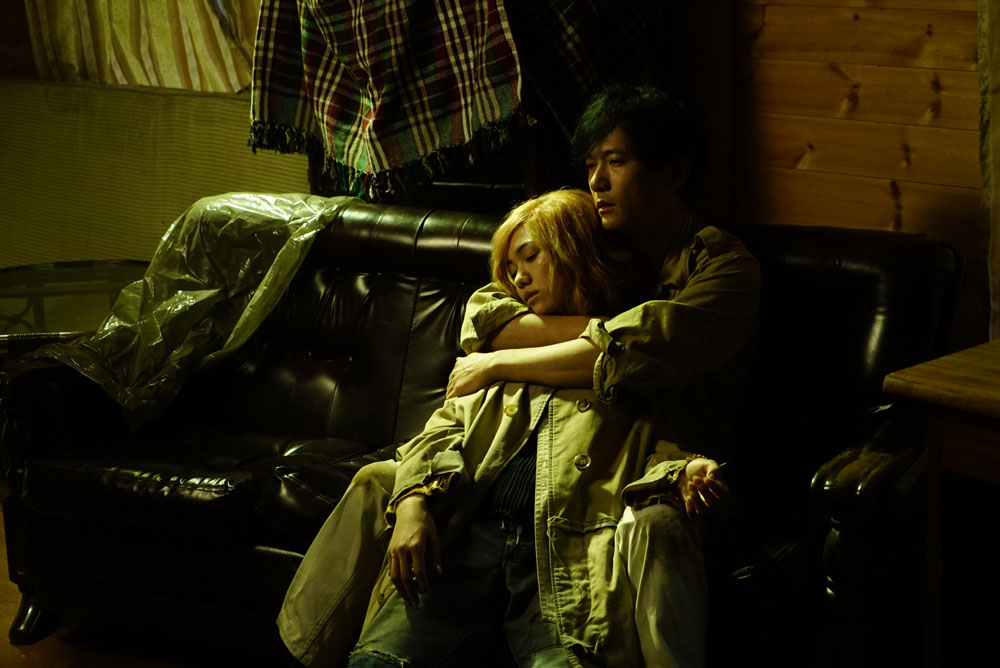!["Barbora" directed by Makoto Tezuka, a film adaptation of his father Osamu Tezuka's unique work focusing on eroticism and pure love [Director's Interview Vol.95]](https://cinemore.jp/images/d69905b5f1d706a3f8ad8347f8dcf40b0e97137522f8a3fa727e990b1f8f8d61.jpg)
"Barbora" directed by Makoto Tezuka, a film adaptation of his father Osamu Tezuka's unique work focusing on eroticism and pure love [Director's Interview Vol.95]
A movie focused on pure love and eroticism
Q: The original story is quite complicated, with a jumble of various elements, but what points did the director focus on when adapting it?
Tezuka: In the original work, the main character gets married along the way, runs away from his wife and enters a mental hospital, and so on. If I put that in the movie, it would be very explanatory, so I thought it would be easier to watch if I skipped that part. Anyway, I wanted to make a simple work this time, so I narrowed it down to a story about a man and a woman that unfolds in a limited space and time.
Q: The impression I got from the movie was quite different from the original. In particular, it seemed to focus more on romantic feelings.
Tezuka: Yes, I was very conscious of that. Ultimately, I think eroticism is the relationship between a man and a woman. I don't mean simply eroticism as an expression, but the relationship between a man and a woman, and the very delicate sense of distance that arises there, is what I think of as eroticism.
In that sense, I think of my works as always being films about eroticism, and perhaps I intentionally choose such themes when making films.
Q: The climax is very shocking, but also has a slightly strange worldview, which feels different from the ending of the original.
Tezuka: In the climax, Balbora is not wearing any clothes. There was a picture like that in the original manga, and the picture was so attractive that I didn't need to explain it and just made her naked. I thought that if she wasn't naked, the scene wouldn't work, so that's why she's naked.
But it really fits. On the other hand, if she had been wearing clothes, it might have felt strange, and it might have come off as more obscene, but being naked makes Barbara beautiful. Nikaido-san is so beautiful that it really gives the impression that there is something sacred there. So I felt that if you follow the original story, it can have a different kind of appeal in the film.

Q: The female bodies that Tezuka-sensei draws are unique, but it seemed to me that Nikaido-san's body and the naked bodies that Tezuka-sensei draws overlapped perfectly.
Tezuka: The lines in Tezuka manga are very sexy. I feel a certain eroticism in them. I was careful about how to shoot and show the images, thinking about how to express those sexy lines in a real human being. I thought a lot about how to shoot things that don't really need to look sexy, so that they look a little more sexy.
What I aimed for the most was that the image itself should be sexy. This is something that can be made to look sexy even if there are no nudes or people in it, or even if it shows the trash of Kabukicho. Who on earth could be a photographer like that? I wondered, and came to the conclusion that it could only be Christopher Doyle.
Q: It may be because the cinematographer is Christopher Doyle, but it's a little different from the traditional nude eroticism of Japanese films.
Tezuka: I don't think so. Japanese films, especially those from the 1960s onwards, have a strangely raw feel to them. To be honest, I don't really like them. They feel oppressive, or rather, sticky.
Q: It feels like I'm dripping with sweat...
Tezuka: That's the image I have, so I wanted to do the exact opposite. This isn't the first time I've had this thought, and I've always felt that way, so the nudes I photograph aren't obscene.
I've been shooting love scenes for a long time, but I've never been told that they're "nasty." Rather, I've been told that they're "beautiful." So, although there are some pretty graphic love scenes in this film, I think women can watch them with ease. In fact, women might find those scenes more pleasurable to watch.
Q: In order to recreate Tezuka Osamu's sexy lines in live action, were there any special techniques you focused on?
Tezuka: At the very beginning, Balboa collapses and the main character finds her. In the original work, Balboa is wearing long pants. That's the only part I wanted to change. In manga, you can express sexiness with lines, but in live action, you have to express it in something different. I asked for short pants to express those sexy lines.
However, the costume designer and Nikaido-san told me, "After all, it would be best to dress like in the original." But if I don't get a sense of Osamu Tezuka's sexy lines somewhere from the start, the impression of the character will change. So I asked them to show my legs in shorts. That was the only thing I asked them to do.
However, in the original story, Barbara goes to Mikura's room and suddenly gets naked. This is too early, in other words, if Nikaido were to take off all her clothes there, it would completely change the impression that follows, so I decided not to have her take off her clothes here.
And in the original story, Balbora suddenly becomes a "woman" in the middle of the story. So in the movie, I hold back until that point and keep her sexy to the very limit. Then, halfway through, she reveals everything, which is how I structured it.
"I'll just do it without thinking" Fumi Nikaido's role preparation

